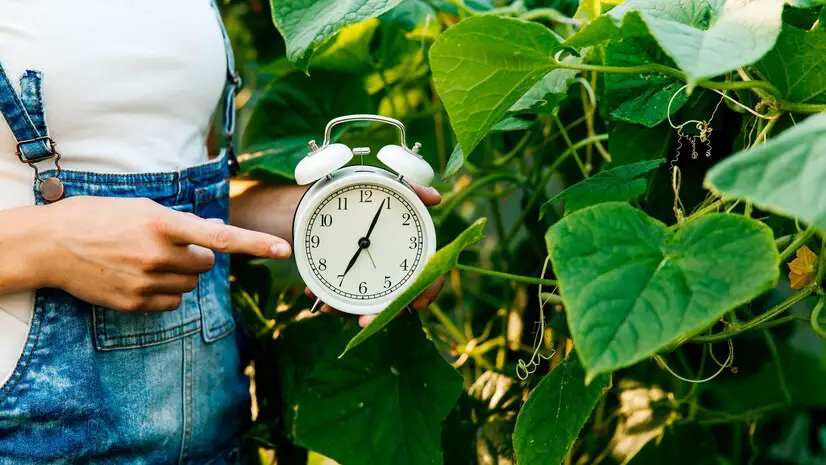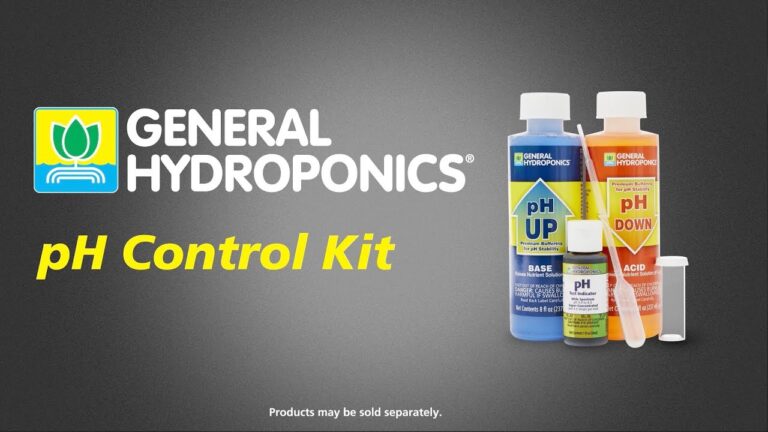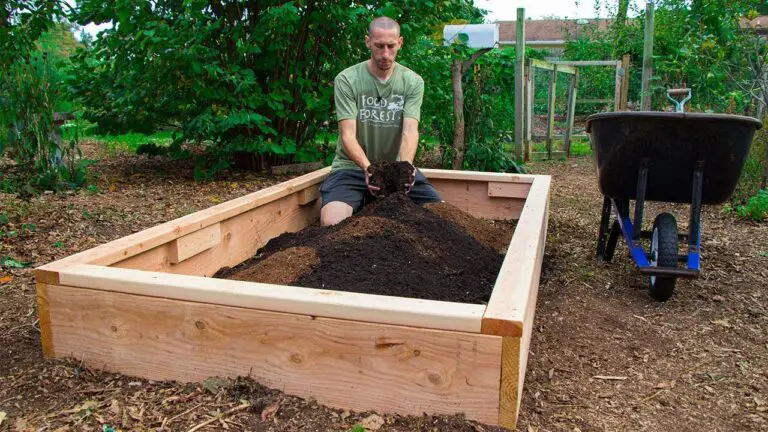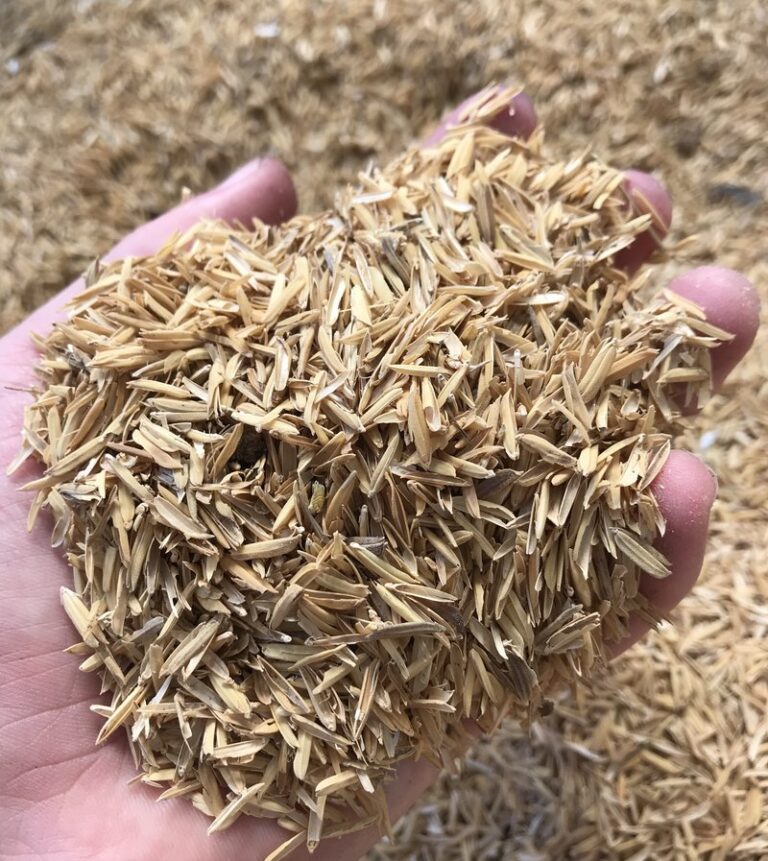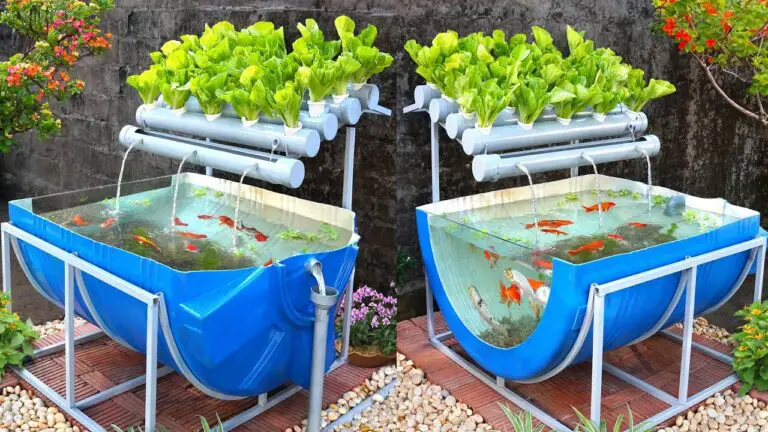How to Use Timers for Successful Hydroponic Gardening
H2: Benefits of Using Timers in Hydroponic Gardening
Using timers in hydroponic gardening can provide numerous benefits for both novice and experienced growers. One primary advantage is the precise control over lighting schedules that timers offer. By automating the on and off times of grow lights, gardeners can easily mimic natural daylight patterns and ensure that plants receive the optimal amount of light for growth. This not only enhances plant development but also eliminates the need for manual intervention, saving time and effort.
Additionally, timers can be used to regulate nutrient delivery in hydroponic systems. By setting specific intervals for nutrient solution circulation, growers can ensure that plants receive a consistent and adequate supply of nutrients. This prevents overfeeding or underfeeding, which can lead to nutrient deficiencies or toxicity. With timers, gardeners can establish a regular feeding schedule that promotes healthy plant growth and maximizes nutrient absorption. This level of control and automation not only streamlines the gardening process but also establishes the ideal conditions for plants to thrive.
• Precise control over lighting schedules
• Mimicking natural daylight patterns
• Ensuring optimal amount of light for growth
• Eliminating the need for manual intervention
• Saving time and effort
• Regulating nutrient delivery in hydroponic systems
• Preventing overfeeding or underfeeding
• Avoiding nutrient deficiencies or toxicity
• Establishing a regular feeding schedule
for healthy plant growth
and maximum nutrient absorption
Using timers in hydroponic gardening provides numerous benefits, including precise control over lighting schedules. By automating the on and off times of grow lights, gardeners can mimic natural daylight patterns and ensure plants receive the optimal amount of light for growth. This not only enhances plant development but also eliminates the need for manual intervention, saving time and effort.
Timers can also be used to regulate nutrient delivery in hydroponic systems. By setting specific intervals for nutrient solution circulation, growers can ensure that plants receive a consistent and adequate supply of nutrients. This prevents overfeeding or underfeeding, which can lead to nutrient deficiencies or toxicity. With timers, gardeners can establish a regular feeding schedule that promotes healthy plant growth and maximizes nutrient absorption.
In addition to streamlining the gardening process, using timers establishes ideal conditions for plants to thrive. The level of control and automation provided by timers allows growers to create an environment that meets their plants’ specific needs without constant monitoring or adjustment. This ensures consistent care while freeing up time for other tasks.
Furthermore, utilizing timers in hydroponic gardening promotes efficiency by optimizing resource usage. By scheduling lighting cycles based on peak energy rates or utilizing off-peak hours when electricity costs are lower, growers can save money on energy bills while still providing ample light for their plants.
Overall, incorporating timers into hydroponic gardening practices offers significant advantages such as precise control over lighting schedules, regulation of nutrient delivery, establishment of regular feeding schedules promoting healthy plant growth and maximum nutrient absorption, streamlining the gardening process, and optimizing resource usage. Whether you are a novice or experienced grower, using timers can greatly enhance your hydroponic gardening experience and contribute to successful plant cultivation.
H2: Understanding the Importance of Timers in Hydroponic Systems
Timers play an essential role in hydroponic systems, providing precise control over crucial environmental factors such as lighting, nutrient delivery, and irrigation schedules. They offer a practical solution to automate and streamline the gardening process, allowing for optimal plant growth and maximizing efficiency.
One of the key advantages of using timers in hydroponic systems is the ability to regulate lighting cycles. Different plants require varying amounts of light exposure, and timers allow gardeners to ensure that plants receive the right amount of light for their specific needs. By setting the timer to turn lights on and off at specific intervals, growers can mimic natural daylight cycles and promote healthy photosynthesis. This not only helps plants thrive but also saves energy by preventing the lights from running unnecessarily.
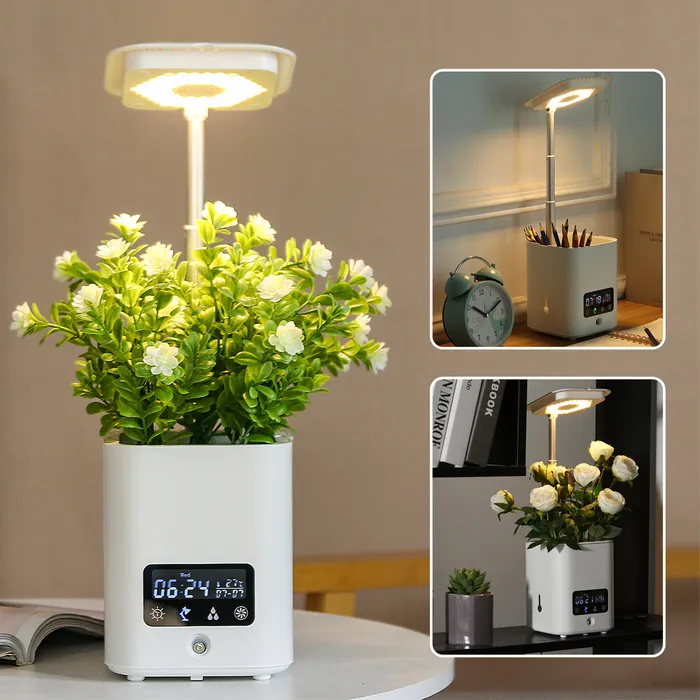
Timers are also crucial for maintaining consistent nutrient delivery in hydroponic gardens. In these systems, plants receive nutrients through water solutions, which need to be supplied at regular intervals. Timers enable gardeners to automate the nutrient delivery process, ensuring that plants receive the right amount of nutrients at the right time. This precision promotes balanced and healthy growth, reducing the risk of nutrient deficiencies or excesses that can hinder plant development. By using timers, gardeners can have peace of mind knowing that their plants are consistently receiving the necessary nutrients for optimal growth.
• Timers in hydroponic systems provide precise control over environmental factors such as lighting, nutrient delivery, and irrigation schedules.
• They automate and streamline the gardening process, allowing for optimal plant growth and maximizing efficiency.
• Timers regulate lighting cycles, ensuring plants receive the right amount of light for their specific needs.
• Mimicking natural daylight cycles promotes healthy photosynthesis and saves energy by preventing lights from running unnecessarily.
• Timers maintain consistent nutrient delivery in hydroponic gardens by automating the process.
• This ensures plants receive the right amount of nutrients at the right time, promoting balanced and healthy growth.
• Using timers reduces the risk of nutrient deficiencies or excesses that can hinder plant development.
• Gardeners can have peace of mind knowing that their plants are consistently receiving necessary nutrients for optimal growth.
H2: Types of Timers Suitable for Hydroponic Gardening
When it comes to hydroponic gardening, choosing the right timers is essential for maintaining optimal growing conditions. There are several types of timers that are suitable for hydroponic setups, each with their own unique features and benefits. A popular option is the digital timer, which offers precise control over timing intervals. These timers often come with programmable settings, allowing users to set specific on and off times for different components of the hydroponic system, such as lights and pumps. Digital timers are also generally user-friendly, with intuitive interfaces and easy-to-read displays.
Another type of timer commonly used in hydroponic gardening is the mechanical timer. These timers offer a simple and reliable way to control the timing of various system components. Mechanical timers often feature a rotary dial or push buttons that allow users to set specific on and off times. They are generally more affordable than digital timers, making them a popular choice for beginners or those on a budget. However, it’s important to note that mechanical timers may not offer the same level of precision as digital timers, which can be a consideration depending on the specific needs of your hydroponic system.
Overall, the type of timer you choose for your hydroponic garden will depend on factors such as your budget, the complexity of your system, and your personal preferences. It’s important to research and consider the features and functionality of different timers before making a decision. Additionally, it may be beneficial to consult with experienced hydroponic gardeners or professionals to get recommendations based on their knowledge and expertise. Ultimately, selecting the right timers for your hydroponic setup will help you achieve optimal growth and maximize the potential of your plants.
• Digital timers offer precise control over timing intervals and often come with programmable settings.
• They are user-friendly with intuitive interfaces and easy-to-read displays.
• Mechanical timers provide a simple and reliable way to control the timing of system components.
• They are generally more affordable than digital timers, making them suitable for beginners or those on a budget.
• However, mechanical timers may not offer the same level of precision as digital timers.
• The type of timer chosen depends on factors such as budget, system complexity, and personal preferences.
• It is important to research different timer options before making a decision.
• Consulting experienced hydroponic gardeners or professionals can provide valuable recommendations.
Overall, selecting the right timers for your hydroponic setup will contribute to optimal growth and maximize plant potential.
H2: Factors to Consider When Choosing Timers for Hydroponic Gardens
When it comes to choosing timers for hydroponic gardens, there are several factors that need to be considered. Firstly, it is important to determine the specific needs of your plants. Different plants have different requirements when it comes to light and nutrient delivery, so the timer you choose should be able to cater to these specific needs. Additionally, the size of your garden will also play a role in the type of timer you choose. Larger gardens may require timers with multiple outlets or the ability to control several lighting zones simultaneously.
Another important factor to consider is the timer’s reliability and durability. Since hydroponic gardening involves a controlled environment, any disruptions in the timing system can have a significant impact on plant growth. Therefore, it is crucial to invest in high-quality timers that are known for their reliability. Look for timers that have good customer reviews and ratings, as this can be a good indicator of their performance and durability. Additionally, consider the warranty offered by the manufacturer, as it can provide added peace of mind. Selecting the right timer for your hydroponic garden is essential for ensuring optimal plant growth and productivity. By considering the specific needs of your plants and investing in a reliable and durable timer, you can effectively control the timing of lighting and nutrient delivery, leading to healthier plants and higher yields.
• Determine the specific needs of your plants in terms of light and nutrient delivery
• Consider the size of your garden and whether you need a timer with multiple outlets or the ability to control several lighting zones simultaneously
• Look for timers that are known for their reliability and durability, as disruptions in timing can have a significant impact on plant growth
• Read customer reviews and ratings to gauge the performance and durability of different timers
• Check the warranty offered by the manufacturer for added peace of mind
• Selecting the right timer is crucial for optimal plant growth and productivity in hydroponic gardens.
Here is a table thats shows what are some of the factors we need to consider while choosing a timer for hydroponics:
| Factor | Description |
|---|---|
| Type of Hydroponic System | The type of hydroponic system you have will determine the type of timer you need. |
| Features | Consider the features you need in a timer, such as battery backup, LCD display, and automatic on/off. |
| Compatibility | Ensure that the timer is compatible with your hydroponic system and water pump. |
| Ease of Use | Choose a timer that is easy to use and set up. |
| Watering Schedule | Set the watering schedule based on the needs of your plants and the environmental factors in your growing area. |
H2: Setting Up Timers for Hydroponic Systems
Setting up timers for hydroponic systems is an essential step in creating a controlled and efficient growing environment for your plants. Before diving into the installation process, it is important to choose the right type of timer for your hydroponic garden. There are various options available, including mechanical timers, digital timers, and smart timers. While mechanical timers are more cost-effective, digital timers provide greater precision and programmability. Smart timers, on the other hand, offer advanced features such as remote control and compatibility with smartphone applications. Consider your specific needs and budget when selecting a timer that best suits your hydroponic setup.
Once you have chosen the appropriate timer, the next step is to properly install it in your hydroponic system. Start by positioning the timer near the power source and ensure that it is placed in a convenient location for easy access. If your hydroponic setup includes multiple components such as grow lights, pumps, and nutrient delivery systems, it is recommended to use individual timers for each device. This allows you to set different schedules and durations according to the specific requirements of each component. Additionally, make sure to follow the manufacturer’s instructions regarding wiring and connections to ensure a safe and reliable setup. Taking the time to correctly set up timers in your hydroponic system will not only streamline your gardening process but also provide optimal control over your plants’ growth and development.
• Choose the right type of timer for your hydroponic garden
– Mechanical timers are cost-effective
– Digital timers provide greater precision and programmability
– Smart timers offer advanced features such as remote control and smartphone compatibility
• Consider your specific needs and budget when selecting a timer
• Position the timer near the power source in a convenient location for easy access
• Use individual timers for each component in your hydroponic setup (grow lights, pumps, nutrient delivery systems)
– Allows you to set different schedules and durations according to specific requirements
• Follow manufacturer’s instructions regarding wiring and connections for a safe and reliable setup
H2: Proper Placement of Timers in Hydroponic Setups
Proper placement of timers in hydroponic setups is crucial for ensuring efficient and effective control over the growing environment. Timers play a vital role in automating various tasks in a hydroponic system, such as controlling lighting schedules, nutrient delivery, and water circulation. To maximize their effectiveness, timers should be strategically positioned within the setup.
First and foremost, timers for controlling lighting should be placed near the light source or within the grow area. This allows for accurate and direct control over the duration and intensity of light provided to the plants. By placing the timer in close proximity to the grow lights, you can minimize the risk of light leakage or interference, ensuring that the plants receive the necessary amount of light at the precise time intervals.
In addition, timers for nutrient delivery and water circulation should be positioned near the nutrient reservoir or the applicable irrigation system. This allows for convenient access to adjust the timing and flow rate of nutrient solutions or water, ensuring that the plants receive the proper amount of nutrients and hydration at optimal intervals. Placing the timers within close reach also simplifies maintenance tasks, such as refilling the reservoir or cleaning the irrigation system, by allowing easy access for adjustments or repairs.
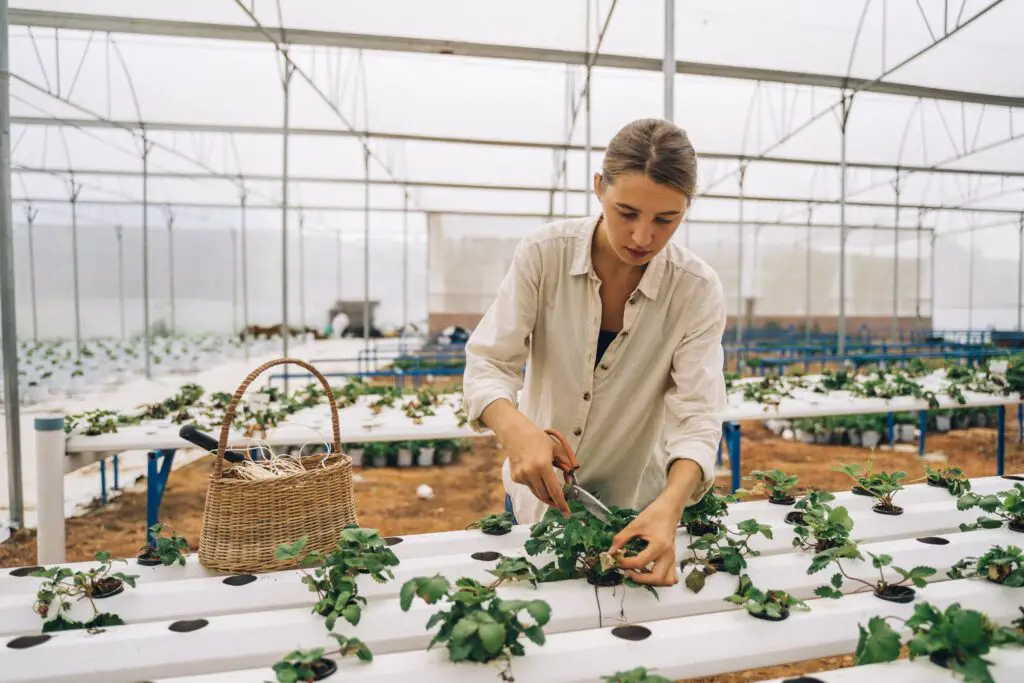
Overall, the proper placement of timers in hydroponic setups is essential to optimize the functionality and efficiency of the system. By strategically positioning timers near the light source and nutrient delivery systems, you can ensure precise control over key elements in the growing environment, ultimately leading to healthier and more productive plants.
• Timers for controlling lighting should be placed near the light source or within the grow area to minimize light leakage or interference.
• Placing timers in close proximity to grow lights allows for accurate and direct control over the duration and intensity of light provided to plants.
• Timers for nutrient delivery and water circulation should be positioned near the nutrient reservoir or applicable irrigation system.
• Convenient access to adjust timing and flow rate of nutrient solutions or water ensures plants receive proper amounts at optimal intervals.
• Placing timers within reach simplifies maintenance tasks, such as refilling reservoirs or cleaning irrigation systems, by allowing easy access for adjustments or repairs.
H2: Determining the Ideal Timer Schedule for Hydroponic Gardens
Determining the ideal timer schedule for hydroponic gardens is crucial for the success of your plants. By setting up a proper schedule, you can ensure that your plants receive the right amount of light, nutrients, and water at the right times, leading to healthy growth and optimal yields.
The first step in determining the ideal timer schedule is to understand the specific requirements of your plants. Different plants have different lighting needs, and they also have different stages of growth that require varying amounts of water and nutrients. Research the specific requirements of the plants you are growing and take note of the ideal lighting duration, nutrient delivery schedule, and watering frequency for each stage of growth.
Next, consider the environmental conditions in which your hydroponic garden is situated. Factors such as temperature, humidity, and CO2 levels can affect plant growth and nutrient uptake. Take note of these conditions and adjust your timer schedule accordingly. For example, during warmer months, you may need to increase the frequency of watering to prevent plants from drying out.
Once you have gathered the necessary information, create a timetable that outlines the timing and duration of each task in your hydroponic garden. Use a timer with multiple programmable settings to automate the process. A timer that allows you to set different schedules for different groups of plants can be particularly useful if you have a variety of plant species in your garden.
Regularly monitor and adjust your timer schedule as needed. Pay attention to the growth and health of your plants, and make changes to the timer settings if you notice any signs of stress or deficiency. Remember that each plant is unique, and it may require some experimentation to find the perfect timer schedule that suits its individual needs.
Determining the ideal timer schedule for your hydroponic garden may require some initial effort and observation, but the benefits are well worth it. With a well-planned schedule, you can ensure that your plants receive the necessary care and resources for successful growth, leading to thriving and bountiful hydroponic gardens.
• Understanding the specific requirements of your plants is crucial for determining the ideal timer schedule.
• Research the lighting duration, nutrient delivery schedule, and watering frequency for each stage of growth.
• Consider environmental conditions like temperature and humidity when adjusting your timer schedule.
• Create a timetable outlining the timing and duration of each task in your hydroponic garden.
• Use a timer with multiple programmable settings to automate the process.
• Regularly monitor and adjust your timer schedule based on plant growth and health.
• Experimentation may be necessary to find the perfect timer schedule for each individual plant.
H2: Adjusting Timer Settings for Different Stages of Plant Growth
Timing is crucial in hydroponic gardening, as different stages of plant growth require varying amounts of light exposure. Adjusting timer settings accordingly can greatly enhance the productivity of your hydroponic garden. During the germination and seedling stage, it is recommended to provide a continuous light cycle of 16 to 18 hours. This extended period promotes healthy root development and accelerates the growth of young plants. However, as the plants enter the vegetative stage, you can reduce the light cycle to around 12 to 16 hours per day. This change simulates the natural light conditions of outdoor gardens and encourages robust leaf growth. Finally, during the flowering stage, it is recommended to decrease the light cycle further to 10 to 12 hours per day. This shorter period prompts the plants to shift their energy towards producing vibrant flowers and fruits.
In addition to adjusting the light cycle, it is important to consider the intensity of the light during different stages of plant growth. Some plants may require higher light intensity during the flowering stage, while others thrive with a consistent level of light throughout their growth cycle. As a general guideline, plants that require high light levels should be placed closer to the light source, while those that prefer lower light levels should be positioned further away. By fine-tuning both the duration and intensity of light exposure using timers, you can optimize the growth and yield of your hydroponic garden.
• During the germination and seedling stage, provide a continuous light cycle of 16 to 18 hours.
• This promotes healthy root development and accelerates the growth of young plants.
• Adjust timer settings accordingly to ensure consistent light exposure during this stage.
• As the plants enter the vegetative stage, reduce the light cycle to around 12 to 16 hours per day.
• This simulates natural outdoor conditions and encourages robust leaf growth.
• Adjust timer settings to provide appropriate light duration for optimal plant development.
• During the flowering stage, decrease the light cycle further to 10 to 12 hours per day.
• This prompts plants to shift their energy towards producing vibrant flowers and fruits.
• Use timers to adjust light exposure during this crucial stage for maximum yield.
• Consider adjusting not only the duration but also intensity of light during different stages of plant growth.
• Some plants may require higher light intensity during flowering, while others thrive with consistent levels throughout their growth cycle.
• Position high-light requiring plants closer to the source and low-light preferring ones further away from it.
• Fine-tune both duration and intensity using timers for optimal results in your hydroponic garden.
For better understanding watch the video.
H2: Utilizing Timers to Optimize Lighting in Hydroponic Gardens
One important aspect of hydroponic gardening is the ability to optimize lighting for your plants. Using timers can greatly help in achieving this goal. Timers allow you to control the duration and intensity of the light received by your plants, ensuring they get the optimal amount of light for their growth.
By utilizing timers, you can mimic natural sunlight cycles, providing your plants with the right amount of light during each stage of their growth. For example, young seedlings require less light compared to mature plants. With timers, you can gradually increase the duration and intensity of light as your plants grow, promoting healthy and vigorous growth. Additionally, timers can help you maintain consistent light schedules without the need for manual intervention, which is especially beneficial if you have a busy lifestyle or are often away from home.
To further enhance the optimization of lighting, you can also incorporate different types of lighting systems and adjust the timers accordingly. Some plants may require specific light spectrums or varying light intensities at different stages of growth. By utilizing timers, you can easily switch between different lighting systems or adjust the settings of your existing system to cater to the specific needs of your plants. This flexibility allows you to create the ideal conditions for each plant variety, leading to maximum productivity and efficiency in your hydroponic garden.
• Timers allow you to control the duration and intensity of light received by your plants
• Mimic natural sunlight cycles for optimal growth at each stage
• Gradually increase duration and intensity as plants grow
• Maintain consistent light schedules without manual intervention
• Incorporate different types of lighting systems and adjust timers accordingly
• Cater to specific needs of plants with varying light spectrums and intensities
• Create ideal conditions for maximum productivity and efficiency in hydroponic garden
H2: Using Timers to Control Nutrient Delivery in Hydroponic Systems
In hydroponic gardening, controlling nutrient delivery is crucial for ensuring optimal plant growth and health. One effective method to achieve this is by utilizing timers. Timers can be programmed to regulate the timing and duration of nutrient delivery, providing plants with the necessary nutrients at regular intervals.
By using timers, gardeners can create a consistent and controlled feeding schedule for their hydroponic systems. This helps to avoid overfeeding or underfeeding the plants, which can lead to nutrient deficiencies or nutrient toxicity. Timers allow for precise control over the amount of nutrients delivered and the frequency of feeding, ensuring that plants receive the right balance of essential elements for their growth.
Furthermore, timers enable gardeners to automate the nutrient delivery process, saving time and effort. Rather than manually monitoring and adjusting the nutrient solution throughout the day, timers can be set up to deliver the nutrients at specific intervals. This feature is especially beneficial for those who may not have the luxury of tending to their hydroponic systems throughout the day. With timers handling the nutrient delivery, gardeners can focus on other aspects of their gardens while ensuring their plants receive consistent and adequate nourishment.
• Timers can be programmed to regulate the timing and duration of nutrient delivery in hydroponic systems.
• They help create a consistent and controlled feeding schedule for plants.
• Timers prevent overfeeding or underfeeding, which can lead to nutrient deficiencies or toxicity.
• Precise control over the amount of nutrients delivered and the frequency of feeding is possible with timers.
• Automation through timers saves time and effort for gardeners.
• Timers allow gardeners to focus on other aspects of their gardens while ensuring plant nourishment.
H2: Managing pH Levels with Timers in Hydroponic Gardening
Maintaining the optimal pH levels in a hydroponic system is crucial for the healthy growth and development of plants. pH levels can affect nutrient absorption, root health, and overall plant vitality. This is where timers can play a vital role in managing pH levels effectively in hydroponic gardening.
By using timers, you can automate the process of adjusting and monitoring pH levels in your hydroponic system. Timers can be connected to pH controllers or dosing pumps, allowing you to schedule regular checks and adjustments throughout the day. This ensures that the pH levels are consistently maintained within the desired range, preventing any fluctuations that might harm your plants.
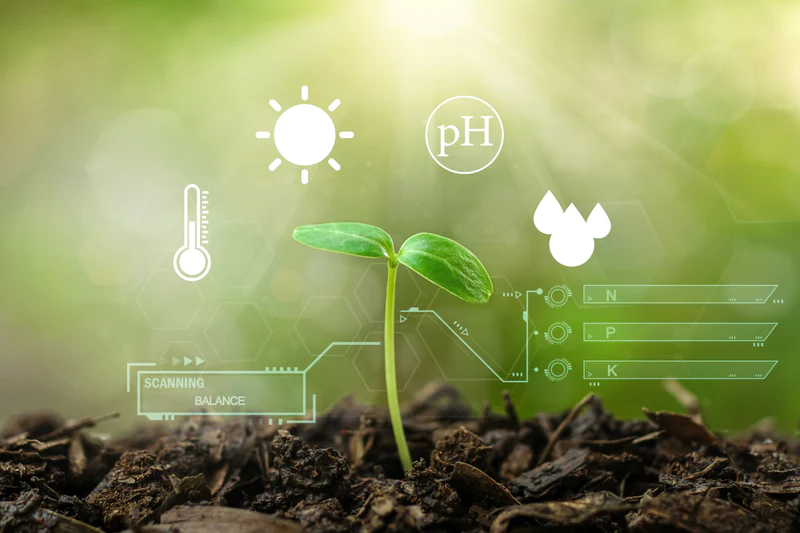
Timers can be set to activate at specific intervals, such as every hour or every few hours, depending on the pH stability of your hydroponic setup. This not only saves you time and effort but also ensures that your plants receive a steady supply of nutrients in an environment with stable pH conditions. With the help of timers, you can take a proactive approach to managing pH levels, ensuring optimal plant growth and maximizing the success of your hydroponic garden.
• Timers can automate the process of adjusting and monitoring pH levels in a hydroponic system.
• Timers can be connected to pH controllers or dosing pumps for scheduling regular checks and adjustments.
• Consistently maintaining pH levels within the desired range prevents fluctuations that may harm plants.
• Timers can be set to activate at specific intervals, saving time and effort for growers.
• Steady nutrient supply in an environment with stable pH conditions promotes optimal plant growth.
H2: Preventing Overwatering and Underwatering Using Timers
Timers play a crucial role in preventing overwatering and underwatering in hydroponic gardens. These automated devices ensure that plants receive the right amount of water at the appropriate intervals, minimizing the risk of plant stress and root rot.
Overwatering can be detrimental to hydroponic plants as it can lead to a lack of oxygen in the root zone. This can suffocate the roots and inhibit proper nutrient uptake, resulting in wilting, yellowing of leaves, and stunted growth. By using timers to control the frequency and duration of watering cycles, gardeners can avoid excessive moisture in the growing medium and maintain optimal oxygen levels for root health.
On the other hand, underwatering can deprive plants of the necessary water they need to thrive. With timers, gardeners can ensure that plants receive regular, scheduled watering, keeping the growing medium moist but not saturated. This promotes healthy root development, vigorous growth, and robust yields.
By harnessing the power of timers in hydroponic systems, gardeners can effectively prevent overwatering and underwatering, creating optimal growing conditions for their plants. In the next section, we will explore the different types of timers suitable for hydroponic gardening and factors to consider when selecting the right one for your setup.
• Timers are essential in preventing overwatering and underwatering in hydroponic gardens.
• These devices ensure plants receive the right amount of water at appropriate intervals, reducing the risk of stress and root rot.
• Overwatering can suffocate roots by depriving them of oxygen, leading to wilting, yellow leaves, and stunted growth.
• Timers control watering cycles to avoid excessive moisture and maintain optimal oxygen levels for root health.
• Underwatering can deprive plants of necessary water for thriving.
• Timers ensure regular scheduled watering, keeping the growing medium moist but not saturated.
• This promotes healthy root development, vigorous growth, and robust yields.
H2: Enhancing Efficiency and Productivity with Timers in Hydroponic Gardens
Enhancing efficiency and productivity is a priority for any hydroponic gardener. One key tool that can help achieve this goal is the use of timers. By automating various tasks in the hydroponic system, timers can optimize the growing conditions and ensure that plants receive the right amount of light, water, and nutrients at specific intervals.
Timers play a crucial role in controlling lighting schedules in hydroponic gardens. By setting timers for the grow lights, gardeners can mimic natural daylight cycles and provide the plants with the ideal amount of light they need for healthy growth. This not only eliminates the need for manual switching on and off of lights but also ensures that plants receive consistent light exposure, promoting faster and more efficient photosynthesis. Additionally, timers can be used to control the duration and intensity of artificial lighting to mimic different stages of the plant’s life cycle, further enhancing growth and productivity.
Moreover, timers are instrumental in regulating the delivery of nutrients to hydroponic plants. By controlling the duration and frequency of nutrient solution circulation or feeding, timers can prevent overfeeding or underfeeding. This precise control helps maintain the optimal balance of nutrients in the hydroponic system, ensuring that plants receive the nutrients they need without the risk of nutrient deficiencies or toxicities. This not only saves time and effort but also promotes healthy plant growth and maximizes productivity in hydroponic gardens.
• Timers automate tasks in hydroponic systems, optimizing growing conditions
• Timers control lighting schedules to mimic natural daylight cycles for optimal plant growth
• Consistent light exposure promotes faster and more efficient photosynthesis
• Timers can adjust artificial lighting duration and intensity for different stages of plant life cycle
• Precise control of nutrient solution circulation prevents overfeeding or underfeeding
• Maintaining optimal balance of nutrients promotes healthy plant growth
and maximizes productivity in hydroponic gardens.
H2: Troubleshooting Timer Issues in Hydroponic Setups
Troubleshooting Timer Issues in Hydroponic Setups
When it comes to hydroponic gardening, timers play a crucial role in ensuring the success of your plants. However, like any other electronic device, timers can sometimes encounter issues that can disrupt the system’s overall functionality. If you find yourself facing timer problems in your hydroponic setup, here are a few troubleshooting tips to help you get back on track.
First and foremost, it’s important to check the power source. The timer may not be working if it is not receiving adequate power. Look for any loose connections or blown fuses that could be causing the problem. Additionally, make sure that the timer is plugged into a reliable outlet that is not affected by power surges or fluctuations. If the power source is not the issue, inspect the timer itself for any signs of damage or malfunction. Sometimes, a faulty component or a stuck mechanism can prevent the timer from operating correctly. By thoroughly examining the timer, you may identify any visible issues that need to be addressed.
• Check the power source for loose connections or blown fuses
• Ensure the timer is plugged into a reliable outlet unaffected by power surges
• Inspect the timer for signs of damage or malfunction
• Look for faulty components or stuck mechanisms that may be affecting its operation
Here is a table that shows some of the issues while using time in hydroponics:
| Factor | Description |
|---|---|
| Power Source | Ensure that the timer is plugged into an outlet and that the outlet is working. |
| Timer Reset | If the timer is not responding, try resetting it by unplugging it and plugging it back in. |
| Settings | Ensure the timer is set to the correct time and date. |
| Compatibility | Ensure that the timer is compatible with your hydroponic system and water pump. |
H2: Maintenance and Care of Timers in Hydroponic Gardening
Maintaining and caring for timers in hydroponic gardening is essential to ensure the smooth operation and efficiency of your system. Timers play a critical role in controlling various functions, such as lighting, nutrient delivery, and pH levels, so it is important to keep them in optimal condition.
Firstly, regular cleaning is essential to prevent dust, dirt, or debris from affecting the timer’s performance. Use a soft cloth or brush to gently clean the timer, ensuring that no residue or build-up is present. Avoid using water or liquid cleaners, as they can damage the internal components.
Furthermore, it is important to check the batteries or power supply regularly to ensure uninterrupted operation. Timers that rely on batteries should be monitored for low battery levels and replaced promptly to avoid any disruptions in the functioning of your hydroponic system. If your timers are powered by electricity, ensure that the power source is stable and protected against power surges.
By taking the time to maintain and care for timers in your hydroponic gardening system, you can ensure their longevity and reliable performance. Regular cleaning and battery/power checks will help prevent any unforeseen issues and allow your timers to function effectively, ultimately contributing to the success of your hydroponic garden.
• Regular cleaning is essential to prevent dust, dirt, or debris from affecting the timer’s performance.
• Use a soft cloth or brush to gently clean the timer, ensuring no residue or build-up is present.
• Avoid using water or liquid cleaners as they can damage internal components.
• Check batteries or power supply regularly to ensure uninterrupted operation.
• Monitor timers relying on batteries for low battery levels and replace promptly if necessary.
• Ensure stable and protected power source for electrically powered timers.
By maintaining and caring for timers in your hydroponic gardening system:
– You can ensure their longevity and reliable performance.
– Regular cleaning and battery/power checks will help prevent any unforeseen issues.
– The effective functioning of timers ultimately contributes to the success of your hydroponic garden.
H2: Tips for Maximizing Timer Efficiency in Hydroponic Systems
To maximize timer efficiency in hydroponic systems, there are several tips that every gardener should keep in mind. Firstly, it is crucial to choose timers that are reliable and suitable for hydroponic gardening. Look for timers that have the necessary features, such as multiple channels for controlling different aspects of the system and customizable settings for precise control of timing intervals.
Secondly, proper placement of timers within the hydroponic setup is essential. It is recommended to position the timers in a convenient location where they are easily accessible for monitoring and adjustments. Additionally, ensure that the timers are protected from water and moisture to avoid any potential damage.
In addition to these factors, determining the ideal timer schedule for hydroponic gardens is key to optimizing plant growth. Consider the specific needs of your plants, such as their lighting requirements and nutrient delivery, and create a schedule that aligns with their growth stages. This will help provide consistency and stability in the system, which ultimately leads to healthier and more productive plants.
By following these tips, gardeners can maximize the efficiency of timers in their hydroponic systems. Whether it’s choosing the right timers, placing them strategically, or establishing an optimal timer schedule, attention to detail and careful consideration will undoubtedly yield positive results. So, take the time to assess your setup and make the necessary adjustments to ensure the best possible outcomes for your hydroponic garden.
• Choose reliable and suitable timers for hydroponic gardening
• Look for timers with multiple channels and customizable settings
• Properly position timers in a convenient location for easy access and monitoring
• Protect timers from water and moisture to prevent damage
• Determine the ideal timer schedule based on plant needs
• Consider lighting requirements, nutrient delivery, and growth stages
• Create a schedule that provides consistency and stability in the system
• Maximize efficiency by paying attention to detail and making necessary adjustments.
H
Hydroponic gardening is a modern and efficient way to grow plants without the use of soil. It relies on a nutrient-rich water solution to provide plants with the necessary elements for growth. One of the key components in a successful hydroponic system is the use of timers. Timers play a crucial role in automating the various aspects of hydroponic gardening, including lighting, nutrient delivery, and pH management.
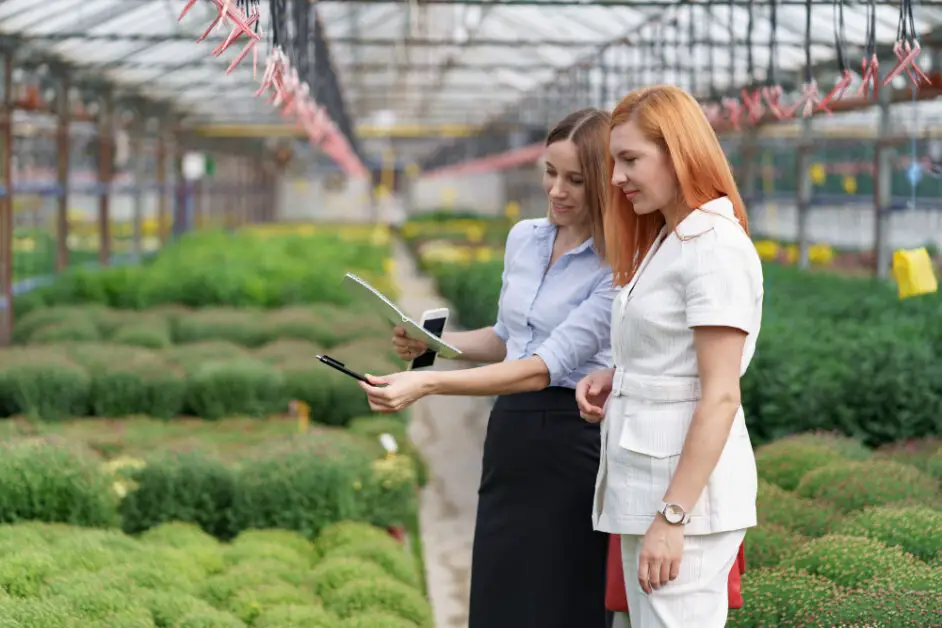
By utilizing timers, hydroponic gardeners can ensure a consistent and optimized environment for their plants. Timers can be programmed to control the duration and timing of lighting, mimicking natural sunlight patterns and allowing plants to undergo proper photosynthesis. They can also regulate the delivery of nutrients to plants, providing precise amounts at specific intervals. Additionally, timers can help in maintaining the ideal pH levels in the water solution, preventing fluctuations that can hinder plant growth. Overall, the strategic use of timers in hydroponic systems enhances efficiency and productivity, allowing gardeners to achieve better yields in less time.
• Timers automate various aspects of hydroponic gardening, including lighting, nutrient delivery, and pH management.
• Timers ensure a consistent and optimized environment for plants.
• Timers can mimic natural sunlight patterns for proper photosynthesis.
• Timers regulate the delivery of nutrients at specific intervals.
• Timers help maintain ideal pH levels in the water solution.
• Strategic use of timers enhances efficiency and productivity in hydroponic systems.
Can timers help save energy in hydroponic gardening?
Yes, timers can help save energy in hydroponic gardening by automatically turning off lights and other equipment when they are not needed.
How can timers prevent overwatering in hydroponic gardens?
Timers can prevent overwatering in hydroponic gardens by controlling the frequency and duration of nutrient solution delivery, ensuring plants receive the right amount of water.
Can timers be used to adjust lighting schedules for different stages of plant growth?
Yes, timers can be used to adjust lighting schedules for different stages of plant growth, allowing plants to receive the appropriate amount and duration of light they need at each stage.
Do timers require regular maintenance and care in hydroponic gardening?
Yes, timers require regular maintenance and care in hydroponic gardening to ensure their proper functioning and accuracy.
Can timers be used to manage pH levels in hydroponic gardens?
While timers themselves do not directly manage pH levels, they can be used to control the delivery of pH-adjusting solutions, helping maintain the desired pH levels in hydroponic systems.
Are there specific types of timers suitable for hydroponic gardening?
Yes, there are specific types of timers suitable for hydroponic gardening, such as digital timers, analog timers, and programmable timers, each offering different features and functionalities.
How should timers be set up in hydroponic systems?
Timers should be properly installed and connected to the necessary equipment, such as lights, pumps, and nutrient delivery systems, following the manufacturer’s instructions and guidelines.
Can timers help optimize nutrient delivery in hydroponic systems?
Yes, timers can help optimize nutrient delivery in hydroponic systems by controlling the timing and frequency of nutrient solution circulation, ensuring plants receive adequate nutrition.
What should be considered when choosing timers for hydroponic gardens?
When choosing timers for hydroponic gardens, factors such as accuracy, reliability, ease of use, programmability, and compatibility with other equipment should be considered.
How can timers enhance efficiency and productivity in hydroponic gardens?
Timers can enhance efficiency and productivity in hydroponic gardens by automating essential tasks, reducing manual labor, providing consistent conditions, and promoting healthy plant growth.
Are there any common issues with timers in hydroponic setups?
Yes, common issues with timers in hydroponic setups may include power outages, programming errors, mechanical malfunctions, and timer failure, which can be troubleshooted by following the manufacturer’s instructions or seeking professional assistance.
What are some tips for maximizing timer efficiency in hydroponic systems?
To maximize timer efficiency in hydroponic systems, it is advisable to regularly check and calibrate timers, keep them protected from moisture and physical damage, and have backup timers or power supply in case of emergencies.

